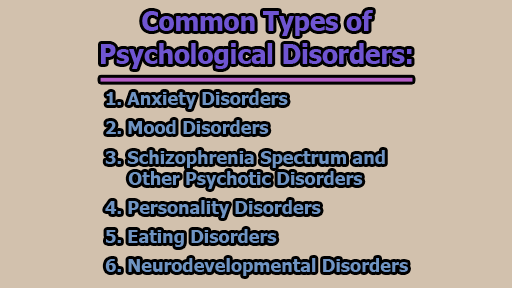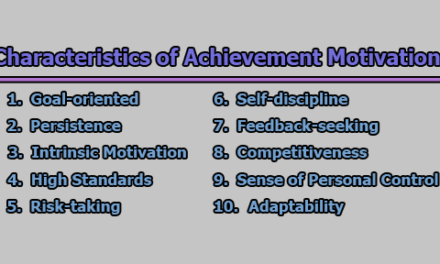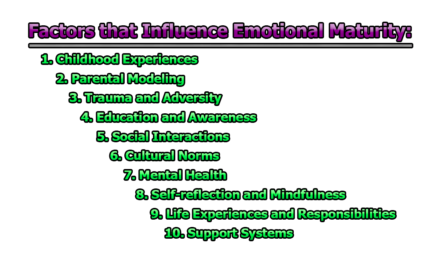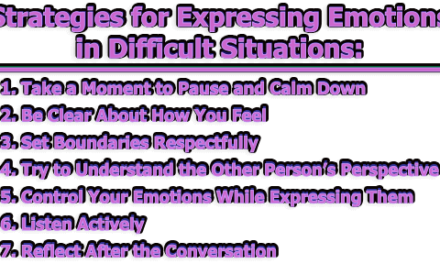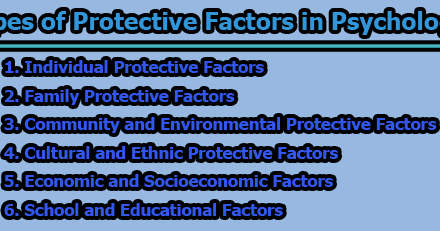Common Types of Psychological Disorders:
The landscape of psychological disorders is vast, encompassing a myriad of conditions that clinicians categorize into different classes. Each class represents a distinctive cluster of symptoms and challenges. Understanding these classifications provides a foundation for comprehending the nuances of mental health. Let’s delve into some of the common types of psychological disorders.
1. Anxiety Disorders (Unraveling the Intricacies):
Anxiety disorders represent a diverse spectrum of conditions that manifest in excessive and uncontrollable worry, fear, or dread. These disorders can significantly impact an individual’s daily life, relationships, and overall well-being. In this section, we explore the subtypes of anxiety disorders.
1.1 Generalized Anxiety Disorder (GAD) (The Weight of Persistent Worry): Generalized Anxiety Disorder (GAD) is a chronic condition marked by persistent and excessive worry about various aspects of life, often without a clear or specific cause. Individuals with GAD find themselves caught in a cycle of apprehension and fear that goes beyond the normal concerns of daily life. The worry is pervasive and can extend to areas such as work, health, relationships, and everyday responsibilities.
Key features of GAD include:
- Physical Symptoms: Individuals may experience symptoms such as muscle tension, restlessness, fatigue, irritability, and difficulty concentrating.
- Sleep Disturbances: GAD often interferes with sleep patterns, leading to insomnia or restless sleep.
- Impact on Daily Functioning: The constant state of worry can impair a person’s ability to carry out daily tasks, affecting both personal and professional life.
Effective treatment for GAD often involves a combination of psychotherapy and medication. Cognitive-Behavioral Therapy (CBT), in particular, has shown success in helping individuals identify and manage irrational thoughts and fears.
1.2 Panic Disorder (Navigating the Waves of Intense Fear): Panic Disorder is characterized by sudden and intense episodes of fear, commonly known as panic attacks. These attacks can be debilitating and are often accompanied by overwhelming physical symptoms, creating a sense of impending doom. Individuals with panic disorder live in constant fear of the next attack, leading to a heightened state of anxiety.
Key features of Panic Disorder include:
- Physical Symptoms: Rapid heart rate, chest pain, shortness of breath, trembling, sweating, dizziness, and a feeling of detachment from reality during panic attacks.
- Avoidance Behaviors: Individuals may alter their daily routines or avoid certain situations to prevent the onset of panic attacks, leading to limitations in their activities.
- Association with Agoraphobia: In severe cases, panic disorder can be associated with agoraphobia, where individuals fear and avoid places or situations where escape might be challenging or embarrassing.
Treatment often involves a combination of cognitive-behavioral therapy, medication (such as antidepressants or anti-anxiety medications), and relaxation techniques to manage the physical symptoms associated with panic attacks.
1.3 Social Anxiety Disorder (The Fear of Social Scrutiny): Social Anxiety Disorder, also known as social phobia, is characterized by an intense fear of social situations due to the dread of judgment or scrutiny by others. Individuals with social anxiety often go to great lengths to avoid social interactions, leading to significant impairment in personal and professional relationships.
Key features of Social Anxiety Disorder include:
- Fear of Negative Evaluation: Individuals fear being judged, criticized, or humiliated in social situations, leading to avoidance behaviors.
- Physical Symptoms: Symptoms may include blushing, trembling, sweating, nausea, and difficulty speaking in social settings.
- Impact on Daily Life: Social anxiety can interfere with academic and occupational performance, making it challenging for individuals to pursue opportunities or engage in social activities.
Treatment options include cognitive-behavioral therapy, exposure therapy, and medication (such as selective serotonin reuptake inhibitors – SSRIs).
1.4 Specific Phobias (Navigating Irrational Fears): Specific Phobias involve intense and irrational fears of specific objects or situations. Unlike everyday fears, specific phobias can cause overwhelming anxiety and may lead individuals to go to great lengths to avoid the feared stimulus.
Key features of Specific Phobias include:
- Immediate Fear Response: Exposure to the phobic stimulus triggers an immediate and intense fear response.
- Avoidance Behaviors: Individuals may go to great lengths to avoid encountering the feared object or situation, which can significantly impact their daily life.
- Impact on Quality of Life: Specific phobias can limit a person’s activities and lead to feelings of embarrassment or shame.
Effective treatments for specific phobias often involve exposure therapy, where individuals are gradually exposed to the feared stimulus in a controlled and supportive environment to reduce anxiety.
1.5 Obsessive-Compulsive Disorder (OCD) (The Battle of Intrusive Thoughts and Rituals): Obsessive-Compulsive Disorder (OCD) is characterized by persistent intrusive thoughts (obsessions) and repetitive behaviors or mental acts (compulsions) aimed at reducing anxiety. Individuals with OCD often feel compelled to engage in rituals to prevent a perceived catastrophe.
Key features of OCD include:
- Intrusive Thoughts: Disturbing and unwanted thoughts or images that cause significant distress.
- Compulsive Behaviors: Repetitive actions or mental rituals performed in response to obsessions, often providing temporary relief from anxiety.
- Impact on Daily Life: OCD can significantly interfere with daily functioning, affecting relationships, work, and overall quality of life.
Treatment for OCD typically involves a combination of cognitive-behavioral therapy, specifically exposure and response prevention (ERP), and medication, such as selective serotonin reuptake inhibitors (SSRIs).
1.6 Post-Traumatic Stress Disorder (PTSD) (Navigating the Aftermath of Trauma): Post-Traumatic Stress Disorder (PTSD) develops after exposure to a traumatic event and can result in flashbacks, nightmares, severe anxiety, and other symptoms. Individuals with PTSD may find it challenging to cope with the aftermath of trauma, impacting their daily lives and relationships.
Key features of PTSD include:
- Intrusive Memories: Flashbacks, nightmares, and distressing memories of the traumatic event.
- Avoidance Behaviors: Avoidance of reminders of the trauma, including people, places, or activities.
- Hyperarousal: Increased arousal, irritability, difficulty sleeping, and exaggerated startle response.
Treatment for PTSD often involves psychotherapy, particularly trauma-focused therapies like Cognitive Processing Therapy (CPT) and Eye Movement Desensitization and Reprocessing (EMDR). Medications, such as antidepressants, may also be prescribed to alleviate symptoms.
2. Mood Disorders (Navigating the Emotional Landscape):
Mood disorders constitute a category of mental health conditions characterized by disturbances in an individual’s emotional state. These disorders can significantly impact one’s ability to regulate mood, leading to disruptions in daily life and interpersonal relationships. In this section, we dive into the subtypes of mood disorders.
2.1 Major Depressive Disorder (MDD) (The Weight of Relentless Sadness): Major Depressive Disorder (MDD) is a prevalent and debilitating mood disorder marked by pervasive feelings of sadness, hopelessness, and a loss of interest or pleasure in activities that were once enjoyable. MDD can affect every facet of an individual’s life, from personal relationships to occupational functioning.
Key features of Major Depressive Disorder include:
- Persistent Depressed Mood: Individuals with MDD experience a pervasive and enduring sense of sadness, emptiness, or despair.
- Loss of Interest or Pleasure: Anhedonia, or the diminished ability to experience pleasure from activities that were once enjoyable, is a hallmark symptom.
- Physical Symptoms: Changes in appetite, sleep disturbances, fatigue, and psychomotor agitation or retardation may also manifest.
- Negative Cognitive Patterns: Individuals may experience negative thoughts about themselves, the world, and the future, contributing to a cycle of hopelessness.
Treatment for MDD often involves a combination of psychotherapy, such as Cognitive-Behavioral Therapy (CBT), and medication, with antidepressants being a common choice.
2.2 Bipolar Disorder (Navigating the Peaks and Valleys of Mood): Bipolar Disorder, formerly known as manic-depressive illness, is characterized by episodes of depression and mania. Individuals with bipolar disorder experience dramatic shifts in mood, energy, and activity levels, impacting their daily functioning and decision-making.
Key features of Bipolar Disorder include:
- Depressive Episodes: Similar to those in Major Depressive Disorder, individuals with bipolar disorder experience periods of profound sadness and loss of interest.
- Manic Episodes: During manic episodes, individuals exhibit elevated mood, increased energy, impulsivity, and a decreased need for sleep.
- Hypomanic Episodes: Less severe than manic episodes, hypomanic episodes involve elevated mood and increased energy but do not cause significant impairment in daily functioning.
- Cyclical Nature: Bipolar disorder follows a cyclical pattern, with episodes of depression and mania interspersed with periods of relative stability.
Treatment for Bipolar Disorder often includes mood stabilizers, such as lithium, and antipsychotic medications. Psychotherapy, particularly psychoeducation and cognitive-behavioral therapy, plays a crucial role in helping individuals manage their symptoms and prevent relapses.
2.3 Cyclothymic Disorder (Chronic Mood Disturbances): Cyclothymic Disorder is a chronic mood disorder characterized by numerous periods of depression and hypomania that do not meet the criteria for major depressive or manic episodes. Individuals with cyclothymic disorder may experience mood fluctuations, but the intensity of their symptoms is less severe than those seen in bipolar disorder.
Key features of Cyclothymic Disorder include:
- Chronic Mood Swings: Individuals with cyclothymic disorder experience frequent mood swings, alternating between periods of low mood and elevated mood.
- Duration Criteria: Symptoms persist for at least two years in adults (one year in children and adolescents), with no more than two months of symptom-free intervals.
- Impact on Functioning: While less severe than bipolar disorder, cyclothymic disorder can still impact daily functioning and quality of life.
Treatment for Cyclothymic Disorder may involve psychotherapy, mood stabilizers, and close monitoring of symptoms over time.
2.4 Seasonal Affective Disorder (SAD) (The Emotional Ebb and Flow with the Seasons): Seasonal Affective Disorder (SAD) is a type of depression that occurs at a specific time of year, most commonly during the winter months when there is less natural sunlight. The changing seasons can profoundly affect an individual’s mood and energy levels.
Key features of Seasonal Affective Disorder include:
- Seasonal Pattern: Symptoms of depression, such as low energy, increased sleep, and weight gain, occur seasonally, typically during the fall and winter.
- Phototherapy: Light therapy, or exposure to a bright light that mimics natural sunlight, is a common treatment for SAD.
- Circadian Rhythm Disruption: Reduced exposure to sunlight during the winter months may disrupt circadian rhythms and contribute to the development of SAD.
- Impact on Lifestyle: SAD can affect daily routines, social interactions, and overall quality of life during specific seasons.
Treatment for Seasonal Affective Disorder may also involve psychotherapy, antidepressant medications, and lifestyle modifications to enhance exposure to natural light.
3. Schizophrenia Spectrum and Other Psychotic Disorders (Navigating the Realm of Distorted Reality):
Schizophrenia spectrum and other psychotic disorders represent a group of severe mental health conditions that profoundly impact an individual’s thoughts, emotions, and perceptions. These disorders often involve a disconnection from reality, marked by hallucinations, delusions, and disturbances in social functioning. In this section, we explore the key features of schizophrenia and related psychotic disorders.
3.1 Schizophrenia (Unraveling the Complex Web of Distorted Thinking): Schizophrenia stands as one of the most profound and debilitating mental disorders, characterized by a spectrum of symptoms that affect thinking, emotions, and behavior. Individuals with schizophrenia often struggle to distinguish between what is real and what is not, leading to significant disruptions in various aspects of their lives.
Key features of Schizophrenia include:
- Distorted Thinking: Individuals may experience disorganized thoughts, making it challenging to communicate coherently.
- Hallucinations: Perceptions of things that are not present, such as hearing voices or seeing things that others do not.
- Delusions: Strongly held false beliefs that are resistant to reason or contrary evidence.
- Impaired Social Functioning: Difficulties in forming and maintaining relationships, leading to social withdrawal.
- Negative Symptoms: A decrease or loss of normal functioning, including reduced emotional expression, motivation, and social engagement.
Treatment for schizophrenia typically involves a combination of antipsychotic medications, psychotherapy, and supportive interventions aimed at helping individuals manage symptoms and improve overall functioning.
3.2 Schizoaffective Disorder (Bridging the Gap Between Schizophrenia and Mood Disorders): Schizoaffective Disorder represents a complex combination of symptoms, blending features of schizophrenia with mood disorder symptoms, such as depression or mania. This disorder challenges clinicians to address both psychotic and mood-related aspects of the condition.
Key features of Schizoaffective Disorder include:
- Psychotic Symptoms: Similar to those seen in schizophrenia, individuals experience hallucinations, delusions, and impaired thinking.
- Mood Symptoms: Concurrent mood disturbances, such as major depressive or manic episodes, distinguish schizoaffective disorder from pure schizophrenia.
- Episodic Nature: Symptoms may occur in distinct episodes, with periods of stability in between.
Treatment for Schizoaffective Disorder often involves a combination of antipsychotic medications, mood stabilizers, and antidepressants. Psychotherapy, especially cognitive-behavioral therapy (CBT) and supportive therapy, plays a vital role in managing both psychotic and mood symptoms.
3.3 Delusional Disorder (Navigating the Persistence of False Beliefs): Delusional Disorder is characterized by fixed false beliefs that persist despite evidence to the contrary. Unlike the broader range of symptoms seen in schizophrenia, individuals with delusional disorder typically do not experience significant impairments in other aspects of their thinking or functioning.
Key features of Delusional Disorder include:
- Fixed False Beliefs: Individuals firmly hold false beliefs that are resistant to correction, often centered around themes such as persecution, grandiosity, jealousy, or erotomania.
- Lack of Other Psychotic Symptoms: Delusional disorder lacks the prominent hallucinations and disorganized thinking commonly seen in schizophrenia.
- Impact on Daily Life: While delusional beliefs can cause distress, individuals with delusional disorder may function relatively well in other areas of their lives.
Treatment for Delusional Disorder often involves psychotherapy, with a focus on helping individuals explore and understand the origins of their delusions. Antipsychotic medications may be prescribed in some cases, although the response to medication is often more variable than in other psychotic disorders.
4. Personality Disorders (Unraveling the Complexities of Self and Others):
Personality disorders represent enduring patterns of inner experience and behavior that deviate markedly from cultural expectations, causing significant distress or impairment. In this section, we explore the distinct characteristics of Borderline Personality Disorder (BPD), Narcissistic Personality Disorder (NPD), and Antisocial Personality Disorder (ASPD).
4.1 Borderline Personality Disorder (BPD) (The Rollercoaster of Emotions and Relationships): Borderline Personality Disorder is characterized by marked instability in relationships, self-image, and emotions. Individuals with BPD often experience intense and rapidly shifting emotions, leading to difficulties in forming and maintaining stable relationships.
Key features of Borderline Personality Disorder include:
- Fear of Abandonment: Individuals with BPD may go to great lengths to avoid real or imagined abandonment, often leading to impulsive behaviors.
- Unstable Relationships: Frequent and intense interpersonal conflicts, coupled with idealization and devaluation of others.
- Identity Disturbance: A pervasive sense of emptiness and instability in self-identity.
- Impulsive Behaviors: Engaging in risky behaviors such as substance abuse, reckless driving, or self-harm.
- Emotional Dysregulation: Difficulty regulating emotions, leading to frequent mood swings and intense reactions.
Treatment for BPD often involves dialectical behavior therapy (DBT), a form of cognitive-behavioral therapy specifically designed for individuals with borderline personality traits. Medications may be prescribed to address specific symptoms, such as mood stabilizers or antidepressants.
4.2 Narcissistic Personality Disorder (NPD) (The Pursuit of Grandiosity and Admiration): Narcissistic Personality Disorder is characterized by an exaggerated sense of self-importance, a lack of empathy, and a constant need for admiration. Individuals with NPD often believe they are unique and entitled to special treatment, while disregarding the feelings and needs of others.
Key features of Narcissistic Personality Disorder include:
- Grandiosity: An exaggerated sense of self-importance and a preoccupation with fantasies of unlimited success, power, beauty, or ideal love.
- Lack of Empathy: Difficulty understanding and empathizing with the feelings and needs of others.
- Exploitative Behavior: Taking advantage of others to achieve personal goals, often without regard for their well-being.
- Fragile Self-Esteem: While appearing confident, individuals with NPD may have a fragile self-esteem that is vulnerable to criticism.
Treatment for Narcissistic Personality Disorder is challenging, as individuals with this disorder often resist acknowledging the need for change. Psychotherapy, particularly cognitive-behavioral approaches, may focus on enhancing empathy and promoting more adaptive interpersonal behaviors.
4.3 Antisocial Personality Disorder (ASPD) (The Challenge of Persistent Disregard for Others): Antisocial Personality Disorder is characterized by persistent patterns of disregard for the rights of others, often accompanied by criminal behavior. Individuals with ASPD may engage in deceit, manipulation, and impulsivity, disregarding the consequences of their actions.
Key features of Antisocial Personality Disorder include:
- Lack of Empathy and Remorse: A profound inability to understand or concern for the feelings and well-being of others.
- Impulsivity: Engaging in risky behaviors without consideration for the potential harm to oneself or others.
- Criminal Behavior: Repeated engagement in unlawful activities, often leading to legal consequences.
- Superficial Charm: Individuals with ASPD may display a charismatic and charming demeanor to manipulate others.
Treatment for Antisocial Personality Disorder is often challenging due to the resistance to change and lack of motivation for treatment in many cases. Management may involve psychotherapy, particularly cognitive-behavioral approaches, and sometimes medications to address specific symptoms or co-occurring conditions.
5. Eating Disorders (The Struggle with Body Image and Control):
Eating disorders represent a complex and challenging category of mental health conditions that center around abnormal eating habits and distorted perceptions of body image. These disorders can have profound physical and psychological consequences. In this section, we delve into the distinct characteristics of Anorexia Nervosa, Bulimia Nervosa, and Binge-Eating Disorder.
5.1 Anorexia Nervosa (The Perilous Pursuit of Thinness): Anorexia Nervosa is characterized by an intense fear of gaining weight, leading to severe calorie restriction and a distorted body image. Individuals with anorexia often perceive themselves as overweight, even if they are significantly underweight, and engage in restrictive behaviors to achieve an unrealistic and often dangerously low body weight.
Key features of Anorexia Nervosa include:
- Severe Calorie Restriction: Individuals limit their food intake, often to the point of self-starvation, leading to significant weight loss.
- Distorted Body Image: A preoccupation with body weight and shape, accompanied by an irrational fear of gaining weight.
- Physical Consequences: Anorexia can lead to a range of physical complications, including malnutrition, electrolyte imbalances, and disruptions in organ function.
- Denial of Severity: Individuals with anorexia may deny the seriousness of their low body weight and resist efforts to address the condition.
Treatment for Anorexia Nervosa often involves a multidisciplinary approach, including medical, nutritional, and psychological components. Cognitive-behavioral therapy (CBT) and family-based therapy have shown effectiveness in addressing the psychological aspects of the disorder.
5.2 Bulimia Nervosa (The Cycle of Binging and Purging): Bulimia Nervosa involves episodes of overeating, often characterized by a sense of loss of control, followed by compensatory behaviors such as vomiting, excessive exercise, or fasting. Individuals with bulimia may maintain a relatively normal weight, but the cycle of bingeing and purging can have severe physical and psychological consequences.
Key features of Bulimia Nervosa include:
- Binge-Eating Episodes: Consuming large amounts of food in a short period, often in secret and with a sense of loss of control.
- Compensatory Behaviors: Attempts to prevent weight gain, such as self-induced vomiting, excessive exercise, or the use of laxatives.
- Preoccupation with Body Shape and Weight: Similar to anorexia, individuals with bulimia place a disproportionate emphasis on body shape and weight.
- Physical Consequences: Frequent purging can lead to electrolyte imbalances, gastrointestinal issues, and dental problems.
Treatment for Bulimia Nervosa often involves psychotherapy, particularly cognitive-behavioral therapy (CBT), which addresses distorted thoughts and behaviors related to body image and eating. Nutritional counseling and support groups can also be beneficial in the recovery process.
5.3 Binge-Eating Disorder (The Struggle with Loss of Control): Binge-Eating Disorder is characterized by frequent episodes of consuming large amounts of food, often rapidly and to the point of discomfort, accompanied by feelings of loss of control. Unlike bulimia, individuals with binge-eating disorder do not engage in regular compensatory behaviors, such as vomiting or excessive exercise.
Key features of Binge-Eating Disorder include:
- Frequent Binge-Eating Episodes: Consuming large quantities of food in a short time frame, often in response to emotional distress.
- Feelings of Loss of Control: A sense of being unable to stop eating during binge episodes.
- Emotional Consequences: Binge-eating episodes are often followed by feelings of guilt, shame, and distress.
- Potential for Obesity: Binge-eating disorder is associated with an increased risk of obesity and related health issues.
Treatment for Binge-Eating Disorder typically involves psychotherapy, including cognitive-behavioral therapy (CBT) or dialectical behavior therapy (DBT), which addresses emotional triggers and maladaptive eating patterns. Nutritional counseling and support groups can also play a crucial role in supporting individuals on their journey to recovery.
6. Neurodevelopmental Disorders (Navigating Challenges in Attention and Social Interaction):
Neurodevelopmental disorders encompass a group of conditions that typically emerge during childhood and impact the development of the nervous system, affecting cognition, behavior, and emotion. In this section, we explore the characteristics of Attention-Deficit/Hyperactivity Disorder (ADHD) and Autism Spectrum Disorder (ASD).
6.1 Attention-Deficit/Hyperactivity Disorder (ADHD) (The Dance of Inattention, Hyperactivity, and Impulsivity): Attention-Deficit/Hyperactivity Disorder is a neurodevelopmental disorder characterized by persistent patterns of inattention, hyperactivity, and impulsivity that significantly interfere with daily functioning. ADHD often begins in childhood and can persist into adolescence and adulthood.
Key features of ADHD include:
- Inattention: Difficulty sustaining attention, frequent careless mistakes, forgetfulness, and distractibility.
- Hyperactivity: Restlessness, fidgeting, and difficulty staying seated or engaged in quiet activities.
- Impulsivity: Acting without considering consequences, interrupting others, and difficulty waiting one’s turn.
- Impact on Daily Functioning: ADHD can affect academic and occupational performance, as well as interpersonal relationships.
Treatment for ADHD often involves a combination of behavioral interventions, psychoeducation, and medication. Stimulant medications, such as methylphenidate and amphetamine derivatives, are commonly prescribed to help manage symptoms and improve attention and impulse control.
6.2 Autism Spectrum Disorder (ASD) (Embracing Diversity in Social Interaction and Behavior): Autism Spectrum Disorder encompasses a range of conditions characterized by challenges in social interaction, communication, and the presence of restricted and repetitive behaviors. ASD is a spectrum, and individuals with this disorder can vary widely in their abilities and challenges.
Key features of Autism Spectrum Disorder include:
- Social Challenges: Difficulty with nonverbal communication, making eye contact, and forming age-appropriate peer relationships.
- Communication Difficulties: Challenges in using and understanding language, along with a preference for routine or repetitive language.
- Restricted and Repetitive Behaviors: Engaging in repetitive movements, intense focus on specific interests, and resistance to change.
- Sensory Sensitivities: Heightened or diminished response to sensory stimuli, such as lights, sounds, or textures.
The management of Autism Spectrum Disorder is highly individualized and may include a combination of behavioral therapy, speech and language therapy, occupational therapy, and educational interventions. Early intervention and support can significantly improve outcomes for individuals with ASD.
In conclusion, the diverse array of psychological disorders reflects the intricate tapestry of human mental health. From mood disorders, anxiety disorders, and personality disorders to eating disorders and neurodevelopmental disorders, each condition carries its unique challenges and complexities. The understanding and recognition of these disorders are essential not only for accurate diagnosis but also for the development of tailored and effective interventions. The multidimensional nature of mental health underscores the need for a holistic approach, combining psychotherapy, medication, and supportive interventions to address the myriad ways in which these disorders manifest. Importantly, fostering awareness, reducing stigma, and promoting early intervention are crucial steps towards building a more compassionate and informed society that supports individuals on their journey towards mental well-being.

Assistant Teacher at Zinzira Pir Mohammad Pilot School and College

